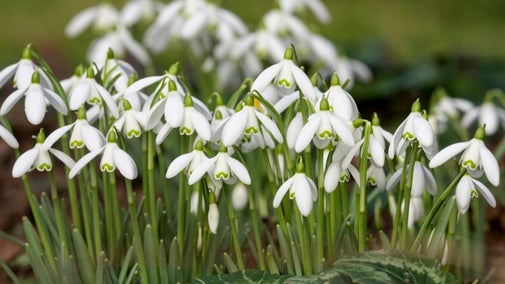
Donate
Everyone needs nature, now more than ever. Donate today and you could help people and nature to thrive at the places we care for.

Thanks to the support of National Highways, we are embarking on a new project to restore over 65 hectares of priority habitat at The Weir Garden. By restoring meadowland, wood pasture, broadleaf woodland, and traditional orchards, we'll create a mosaic of diverse habitats for wildlife.
The Weir Garden is an eighteenth-century riverside and walled garden, occupying four-hectares along the banks of the River Wye. This area, however, is only a small part of the 100 hectares of land that make up The Weir estate, which features parkland and farmland situated on either side of the A438 Hereford to Hay on Wye road.
Until 2022, most of this farm and parkland was let to a tenant farmer. The land has since come back into the care of the National Trust, and we have been working to identify the priorities for the uses and management of these areas. This work has led to the development of the Weir priority habitat restoration project.

Thanks to the generous funding from National Highways Designated Funds, we are able to begin work on creating and restoring over 65 hectares of priority habitat at The Weir Garden. This involves restoring woodland and wood pasture and establishing new orchards and meadowlands. These changes will help to create important wildlife habitats across the estate, while also capturing additional carbon and improving the soil and water quality. Most of the planting and seeding will take place in 2024 and 2025, and the land will continue to be monitored and cared after the completion of the project.
Part of this project will involve planting native wildflowers and grass seed to create new meadowland habitats. Meadows will be planted and sown with species such as common knapweed, ox-eye daisy, bird’s-foot trefoil and meadow buttercup.
Creating wildflower-rich meadowland at the Weir will vastly improve the biodiversity of the site, establishing new, flourishing habitats for important pollinators, nesting birds, and small mammals. Research shows that 97% of UK meadows have been lost over the past century, meaning it is more important than ever to ensure these habitats are restored and protected.

Some areas will be planted with individual parkland trees to create wood pasture and others will be planted with a blend of native broadleaved trees to restore woodland.
The predominant tree species in the woodland will be oak, with added lime, sweet chestnut, beech and field maple. Countless species can thrive in wooded areas, from common birds and mammals to rare flora and fungi.
We will also be restoring traditional orchards with local varieties of apple, pear, damson, plum and cherry trees and establishing a new hedgerow with native species, providing a much-needed habitat for insect pollinators. Research shows that traditional orchards and hedgerows have been in decline in the UK, with wildlife losing out on important habitats and resources. We are proud to be restoring these priority habitats in the heart of Herefordshire, a county famous for its fruit producing heritage.

In addition to the habitat restoration work, this project also involves working with partners on a creative programme regarding the future of The Weir.
In 2024, thanks to a UKSPF grant from the Herefordshire Council, we are working in partnership with Meadow Arts, a contemporary visual arts charity, to explore our visitors’ views on the evolving landscape and how they’d like to use it in the future.
Throughout the summer, Meadow Arts are conducting a series of artist-led workshops with local communities and visitors at The Weir Garden. The workshops will delve into the themes of the project through artwork, poetry, walking, other family-friendly activities with the aim of helping our visitors develop new connections to the landscape through the medium of art, and therefore help us to evaluate the needs and possibilities for the future of The Weir.
Community groups participating in the programme include Hereford Mind, Leominster Meeting Centre, Hereford 6th Form College and Earl Mortimer College. The artists commissioned to lead the activity include Chris Poolman, Emily Hedges, Emma Beynon, Celia Johnson, Harriet Carter and Daniel Pryde-Jarman.
We're inviting visitors to participate in free workshops on the 12 July and 14 September (normal admission applies).
The project will culminate with a showcase day at The Weir Garden on 14 September, where examples of the different art pieces that have been created in the workshops will be on display.
To find out more follow the link below.

Everyone needs nature, now more than ever. Donate today and you could help people and nature to thrive at the places we care for.

The project is fully funded with thanks to a grant awarded from National Highways Environment and Wellbeing Fund.

Explore the garden on the banks of the River Wye and discover the unusual walled garden, restored glasshouse, rockery and rustic hut.

Enjoy this short, circular walk around the parkland at The Weir Garden, exploring the rich history of the wider estate, discovering the hug variety of wildlife, and taking in the sweeping views over the Herefordshire countryside

The garden at The Weir is managed in a natural way to create a varied habitat for wildlife. You can see many species in the garden - from the otters and fish that live in the river, to the birds that nest here. In the wider estate we are in the process of restoring over 65 hectares of priority habitat.